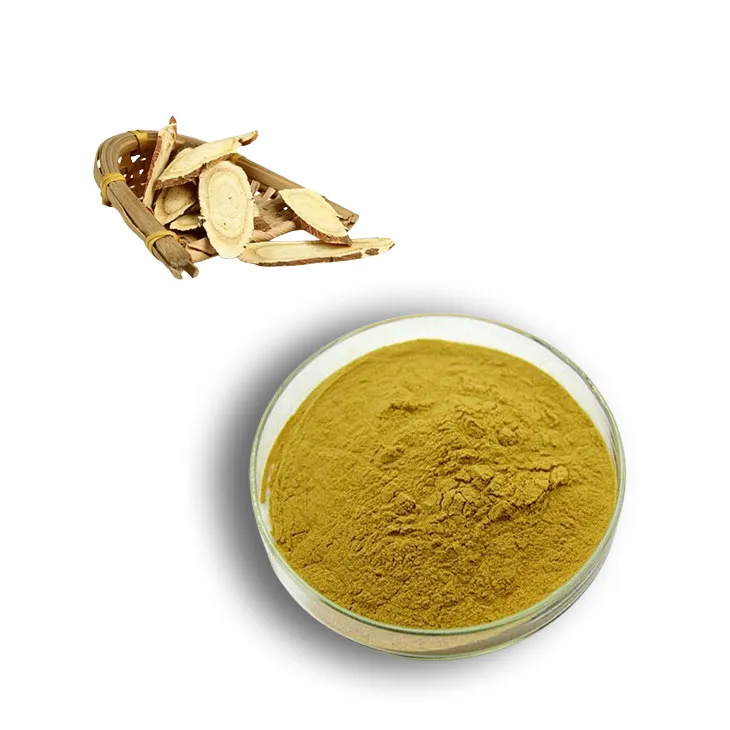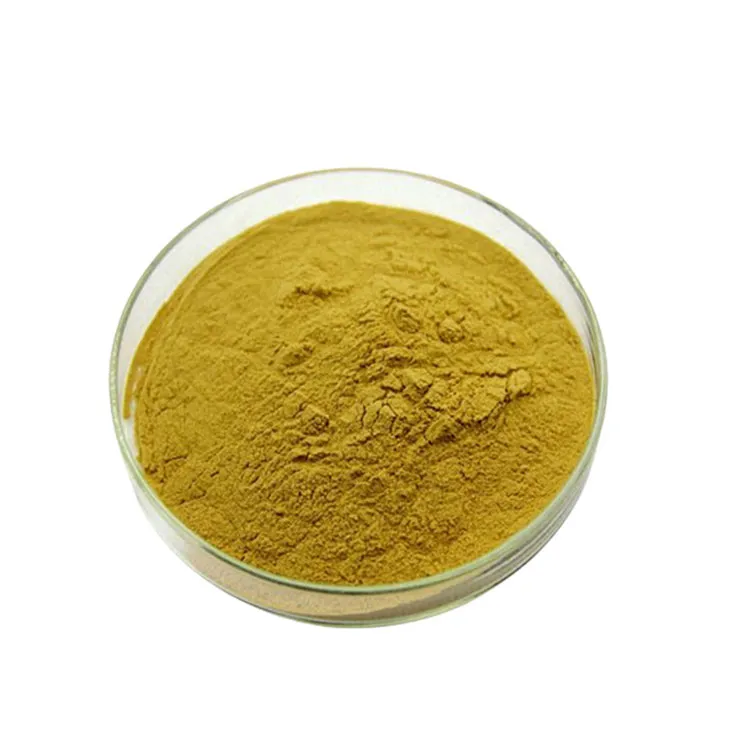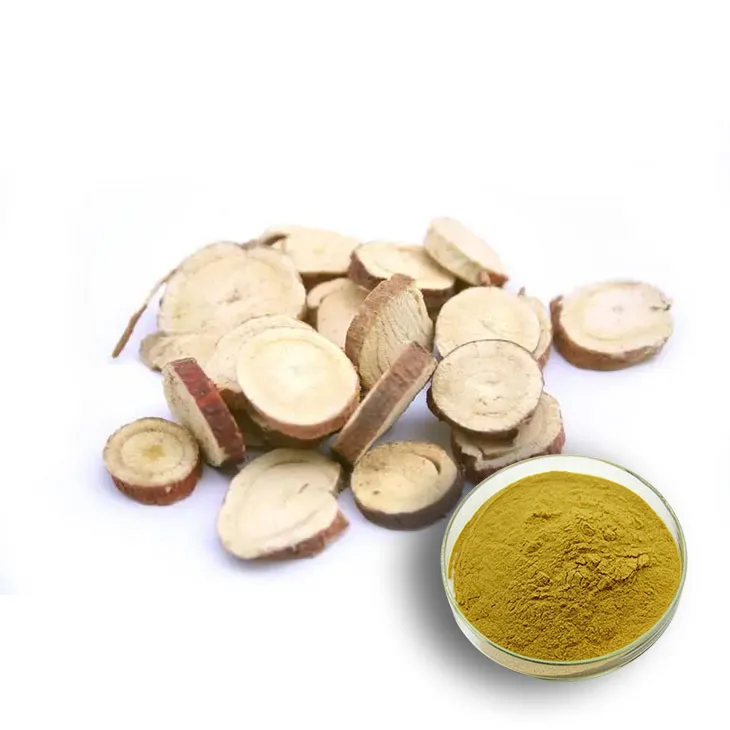- 0086-571-85302990
- sales@greenskybio.com
The extraction process of licorice root extract powder.
2024-11-27

1. Introduction
Licorice root has a long - standing history of being used for its medicinal properties. It has been an important ingredient in traditional medicine systems across the world for centuries. The extraction of licorice root to obtain extract powder is a complex process that aims to harness the beneficial compounds present in the root. These compounds include glycyrrhizic acid, flavonoids, and other bioactive substances which are responsible for its various medicinal effects such as anti - inflammatory, antioxidant, and anti - microbial properties.

2. Collection of Licorice Roots
The first step in the extraction process is the collection of licorice roots. Licorice plants are typically grown in specific regions with suitable soil and climate conditions. For example, they are often found in dry and sunny areas. The roots are harvested at the appropriate time, which is usually when the plant has reached a certain level of maturity. This ensures that the roots contain an optimal amount of the desired active ingredients.
- Harvesting too early may result in roots with insufficient levels of bioactive compounds.
- On the other hand, delaying the harvest for too long may lead to a decrease in the quality of the roots due to factors such as pest infestation or over - maturation.

3. Cleaning of Licorice Roots
Once the licorice roots are harvested, they need to be properly cleaned. Cleaning is a crucial step as it removes dirt, debris, and other contaminants from the roots. This can be achieved through several methods:
- Washing with water: The roots are gently washed under running water to remove loose soil and surface impurities. However, care must be taken not to over - soak the roots as this may cause the loss of some water - soluble active ingredients.
- Brushing: For more stubborn dirt or debris, a soft brush can be used to scrub the roots gently. This helps in removing any particles that are adhered firmly to the root surface.

4. Maceration Process
Maceration is one of the methods used for the extraction of licorice root. In this process, the cleaned roots are soaked in a suitable solvent.
- Selection of solvent: The choice of solvent is important as it determines the type and amount of active ingredients that can be extracted. Commonly used solvents include water, ethanol, or a mixture of both. Water is a good solvent for polar compounds, while ethanol can extract a wider range of compounds including both polar and non - polar ones. For example, if the focus is on extracting glycyrrhizic acid, a water - based solvent may be preferred as glycyrrhizic acid is relatively polar.
- Soaking time: The roots are left to soak in the solvent for a specific period. This time can vary depending on factors such as the type of root, the solvent used, and the desired concentration of the extract. Typically, the soaking time can range from a few hours to several days. For instance, if using a water - ethanol mixture as a solvent, a soaking time of 24 - 48 hours may be sufficient to extract a significant amount of active ingredients. During this time, the solvent penetrates the root tissue and the active ingredients dissolve into the solvent through diffusion.
- Stirring: To enhance the extraction process, gentle stirring of the maceration mixture can be carried out at regular intervals. This helps in improving the contact between the roots and the solvent, facilitating a more efficient transfer of the active ingredients into the solvent. However, excessive stirring should be avoided as it may cause mechanical damage to the root tissue and lead to the extraction of unwanted substances.

5. Percolation Process
Percolation is another important extraction method for licorice root. It is a continuous extraction process that differs from maceration.
- Setup: In percolation, the cleaned licorice roots are placed in a percolator, which is a specialized apparatus. The solvent is then introduced at the top of the percolator and allowed to slowly pass through the bed of roots. As the solvent percolates through the roots, it extracts the active ingredients along the way.
- Flow rate: The flow rate of the solvent through the percolator is a critical factor. A slow and controlled flow rate is preferred as it allows sufficient time for the solvent to interact with the roots and extract the active ingredients effectively. If the flow rate is too fast, the solvent may not have enough time to fully extract the desired compounds, resulting in a less concentrated and less effective extract.
- Advantages over maceration: Percolation has certain advantages compared to maceration. One of the main advantages is that it is a more continuous and efficient process. Since the solvent is constantly being refreshed as it passes through the roots, the extraction can be more complete. Additionally, percolation may require less solvent compared to maceration for achieving a similar level of extraction, which can be beneficial in terms of cost and environmental impact.
6. Refining the Extract
After obtaining the initial extract through either maceration or percolation, the extract needs to be refined. This is mainly done to remove the solvent and any impurities that may be present in the extract.
- Distillation: Distillation is a common method used for solvent removal. In distillation, the extract is heated, and the solvent is vaporized and then condensed and collected separately. This allows for the separation of the solvent from the active ingredients. However, care must be taken during distillation as some of the more volatile active ingredients may also be lost if the temperature is too high. For example, if the extract contains certain volatile flavonoids, a gentle distillation process at a relatively low temperature may be required to preserve these compounds.
- Evaporation: Evaporation is another option for removing the solvent. In this method, the extract is spread out in a shallow container and allowed to evaporate under controlled conditions. This can be done at a lower temperature compared to distillation, which may be more suitable for heat - sensitive active ingredients. However, evaporation may take longer than distillation and may also be less efficient in completely removing the solvent.
7. Drying the Concentrated Extract
Once the solvent has been removed or reduced to a desired level, the concentrated extract needs to be dried to obtain the Licorice Root Extract Powder. There are two main drying methods commonly used:
- Spray - drying: In spray - drying, the concentrated extract is atomized into a fine mist and sprayed into a hot drying chamber. The hot air rapidly dries the droplets, converting them into a powder form. Spray - drying is a relatively fast process and can produce a fine - textured powder with good flow properties. However, it requires specialized equipment and careful control of the drying parameters such as inlet and outlet air temperatures, atomization pressure, and feed rate to ensure the quality of the final product.
- Freeze - drying: Freeze - drying, also known as lyophilization, involves freezing the concentrated extract first and then subjecting it to a vacuum environment. Under the vacuum, the ice in the frozen extract sublimates directly from the solid state to the gaseous state, leaving behind a dry powder. Freeze - drying is a gentler drying method compared to spray - drying and is particularly suitable for heat - sensitive active ingredients as it occurs at a low temperature. However, it is a more time - consuming and expensive process.
8. Conclusion
The extraction of Licorice Root Extract Powder is a multi - step process that involves careful collection, cleaning, extraction, refining, and drying of the licorice roots. Each step plays a crucial role in obtaining a high - quality extract powder rich in the desired active ingredients. The choice of extraction and drying methods depends on various factors such as the nature of the active ingredients, cost, and efficiency requirements. With the increasing demand for natural products with medicinal properties, understanding and optimizing the extraction process of Licorice Root Extract Powder is of great importance in the fields of pharmaceuticals, cosmetics, and food industries.
FAQ:
What are the suitable solvents for licorice root extraction?
Commonly used solvents for licorice root extraction include water, ethanol, or a combination of both. Water can extract water - soluble components, while ethanol is effective in extracting a wide range of both polar and non - polar active ingredients present in the licorice root.
How long does the maceration process usually take?
The maceration time can vary depending on several factors such as the type of solvent used, the fineness of the licorice root particles, and the desired concentration of the extract. Generally, it can range from a few hours to several days. For example, when using ethanol as a solvent, maceration may take around 24 - 72 hours.
What are the advantages of spray - drying over freeze - drying in the production of licorice root extract powder?
Spray - drying is a relatively fast and cost - effective method. It can handle large volumes of the concentrated extract in a continuous process. In contrast, freeze - drying is more expensive but can better preserve the heat - sensitive components of the extract. Spray - drying results in a powder with good flowability and solubility, which are important properties for many applications.
Can the extraction process affect the medicinal properties of licorice root?
The extraction process can potentially affect the medicinal properties. If the extraction conditions are not properly controlled, such as using excessive heat during distillation or evaporation, some heat - sensitive active ingredients may be degraded. However, when carried out correctly, the extraction process aims to isolate and concentrate the beneficial components, thus enhancing their availability and potential medicinal effects.
How is the quality of licorice root extract powder controlled during the extraction process?
Quality control during the extraction process involves several aspects. Firstly, the quality of the raw licorice roots is carefully monitored, ensuring they are free from contaminants and of the appropriate species. During extraction, parameters such as solvent concentration, extraction time, and temperature are closely controlled. After drying, the powder is tested for its active ingredient content, purity, and physical properties like particle size and solubility.
Related literature
- Optimization of Licorice Root Extraction for Medicinal Applications"
- "The Science Behind Licorice Root Extract: From Extraction to Therapeutic Use"
- "Recent Advances in Licorice Root Extract Powder Production"
- ▶ Hesperidin
- ▶ Citrus Bioflavonoids
- ▶ Plant Extract
- ▶ lycopene
- ▶ Diosmin
- ▶ Grape seed extract
- ▶ Sea buckthorn Juice Powder
- ▶ Fruit Juice Powder
- ▶ Hops Extract
- ▶ Artichoke Extract
- ▶ Mushroom extract
- ▶ Astaxanthin
- ▶ Green Tea Extract
- ▶ Curcumin
- ▶ Horse Chestnut Extract
- ▶ Other Product
- ▶ Boswellia Serrata Extract
- ▶ Resveratrol
- ▶ Marigold Extract
- ▶ Grape Leaf Extract
- ▶ New Product
- ▶ Aminolevulinic acid
- ▶ Cranberry Extract
- ▶ Red Yeast Rice
- ▶ Red Wine Extract
-
Peppermint Oil
2024-11-27
-
Aguaje Extract
2024-11-27
-
Almond Extract Powder
2024-11-27
-
Ginseng Root Extract
2024-11-27
-
Eyebright Extract
2024-11-27
-
Diosmin
2024-11-27
-
Bilberry Extract
2024-11-27
-
Propolis Extract Powder
2024-11-27
-
Oyster Mushroom Extract Powder
2024-11-27
-
Horse Chestnut Extract
2024-11-27





















